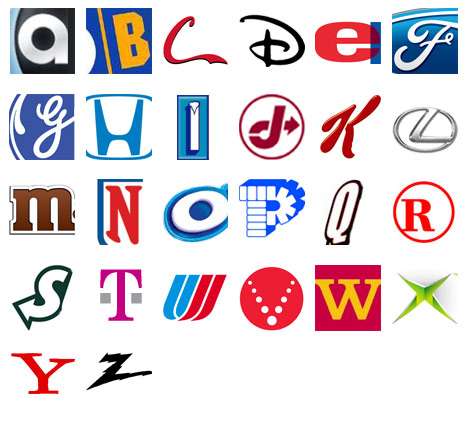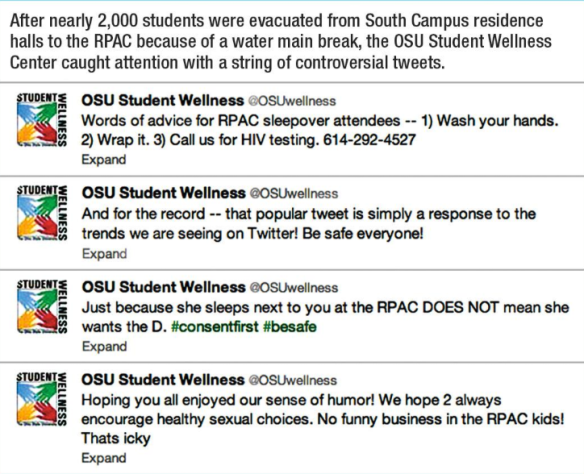date
type of post
hyperlink
___________________________
Sept 19
Tonybenedetti13
Comment #1
An interesting look at the marketing strategy of the infamous McRib! I found a pretty insightful article detailing the entire marketing strategy of the McRib that can be found below. It gives some information about the marketing strategies of McDonalds covering more than this years McRib shenanigans.
__________________________
Sept 25
Sam Duff: Comm-elier
Comment #2
I originally heard about this campaign through another Comm class at OSU but I remember loving the idea of the simple message being the most powerful! Sometimes organizations like the CDC can try and be clever or funny and actually hurt themselves. In this case, they increased awareness of their brand and definitely got their name out there! Great post and great use of links!
_________________________
Sep 30
Nice post! Interesting that as the technological communication changes…so does the marketing strategies! What is the most interesting to me is that it costs them no money at all to put out these “ads.”
The other cool thing is that the amount of people these ads reach. The amount of people on social networks and the ability to share something in a click of the mouse is making it so much easier to reach an audience. Whether or not it is using your customers to do your ads for you or not — the truth is that has been happening for years (t-shirts, flyers, magazines, ect).
Comment #3
______________________________________
September 30
Thanks for this post! I really like your examples of bloggers! Cool to look at the differences in styles and formats.
What is extremely interesting to me is that I have read so many articles on news sites and then commented, thinking they were just news articles. What I have come to realize is that most of these are just blogs that get posted on news sites. I think that journalism is taking a turn towards blogs and i think that it is an interesting development.
Do you think that commenting helps or hurts the industry? The one thing that I question is the lack of evidence to back up the arguments. Anyone can comment…but the people writing the blogs for news orgs have to have the facts.
http://talkinthetalk.wordpress.com
______________________________________
Nov 14
Evan…great post! I really enjoyed your ideas about psychology and our major. I think that it is interesting that if people are not interested in commercials and do not look for these behind the scene ideas.
It is also funny you talk about low budget local ads because I also cannot stand them. It has become acceptable to put out ridiculous ads that go so over the top they leave you asking “what just happened?” Whether or not this is psychological, I don’t know. I do think you are spot on with the Ray Lewis example. Those commercials are definitely psychological and an interesting look at celebrities in ads. I find myself agreeing with ideas and seeking out products that are endorsed by celebrities just because I think they are trustworthy. They wouldn’t be advertising if the product wasn’t awesome…right?
I think of how professional athletes do ads for McDonalds and Coke…I wonder how many of them actually buy those goods.
Psychology of Marketing
_______________________________________
Nov 18
Wow. I had no idea that Arkansas did this. Pretty cool use of pop culture and media trends by the Razorbacks. I don’t think that a player will ever have a hashtag on the back of their jersey but I do have to say that I would have never expected a team to do this either. I could definitely see more schools jumping on this bandwagon however. It is an easy way for the college and professional teams to get their brand out into the mainstream media even more.
The interesting thing I find is that Twitter is so much less complicated than Facebook. I remember when I had my first Twitter and no one thought it would take off. People loved Facebook for the pictures and the posts…now it seems that the only people we want on our Facebook pages are our close family and friends. Twitter is simple. easy. and effective. Twitter wins.
Twitter Taking Over!
______________________________
Nov 18
I agree! Bring on the change. Wendy’s, in my opinion, has done something awesome here. After that long of a logo…I think it was time for some change. Although I am not the biggest fan of their new logo, I think that it should momentarily provide the company with some press (positive or negative). I read somewhere that the sales from the stores that had done the logo change have gone up 25%. Maybe the new look has brought a breath of fresh air to the Wendy’s workers? I think it will be interesting to see how the perception of Wendy’s brand will/has changed after this new look. I also think it will be of interest to track whether or not Wendy’s can sustain the 25% sale increase or it is just a short time deal. Cool post and interesting news that I hadn’t heard about until I read your blog!
Wendy’s: Biting off more than they can chew?
_______________________________________________________
Nov 18
Great post Logan. I too find this subject very interesting…because I don’t think anyone really knows what will happen. I like the idea of our generation not wanting to be advertised to because in reality, we are always being advertised to. I also think we are to the point that for an ad to be effective, it needs to wow us. If it doesn’t wow us, we aren’t interested. Which makes me think we like be advertised to up to a certain level. I don’t know if anything is cool enough to really take Twitter off the map though….We all want to be a part of something while still being unique…who knows what the future holds.
Killing it.
________________________________________________
Nov 19
Stephanie, good post! I think it is interesting that although print may not be dead…it is slowly dying. I do not think there will ever be a time when print is completely dead, but we are getting close. I think the more boring our print has become, the more neccessary it has become to bring something creative to the table. I like the idea of stylish brochures and I think that is one way to break through the clutter of every day print nonsense. I feel like the same thing is true with the internet, if you aren’t special or unique, you aren’t anything. I think it would be interesting to see how long some of these brochures took to put together!
http://stephaniecichy.wordpress.com/2012/11/19/will-brochures-make-the-cut/comment-page-1/#comment-10
_________________________________________________
Nov 19
Thanks for the post Patrick! I had a similar experience with Tweet chats. I feel like it is a love-hate relationship that I am unsure will ever change. There is something about being outside of a conversation and trying to put in or take out valuable information…it just doesn’t seem to work. I think that whether you are in person or online we should all put down our phones and listen.
A Different Way to Chat






